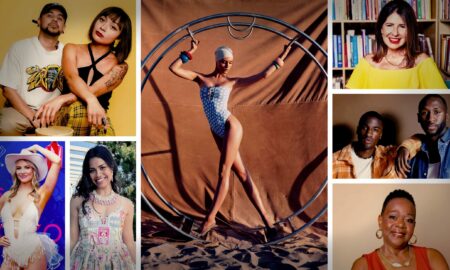

Today we’d like to introduce you to Fariborz Azhakh.
Hi Fariborz, please kick things off for us with an introduction to yourself and your story.
An immigrant from Iran. Came here when I was 14, before the 1978 revolution. Running one of the largest and most successful martial art schools in the USA.
Would you say it’s been a smooth road, and if not what are some of the biggest challenges you’ve faced along the way?
1) Not knowing the language
2) Being from Iran and being misjudged
3) $ and opportunities
Established in 1982 you inspired so many, who or what inspired you?
When I was a young boy growing up in Tehran, Iran Firouz, my brother, used to take me out to see martial arts movies every weekend. When I saw Bruce Lee’s “Enter the Dragon” I was hooked! From there, the things I learned through self-development training inspired me and shaped my belief system. The first were People Synergistically Involved (PSI) and Life Spring but the most powerful of all was spending a week in Utah with Stephen R. Covey working on the “7 Habits of Highly Effective People”. Covey’s philosophy not only made sense in my mind but stayed in my heart; I am forever grateful for the knowledge I received from him and his organization.
What are your expert tips on training solo or remotely?
Much of my own early training was solo. My advice is to develop a simple routine that is repeatable and practice it consistently. For example, for me, doing “count kicks” – developed by Jhoon Rhee – still hits this mark. Also, we must remember that, as martial artists, our training consists of mental, emotional, physical and spiritual elements. The physical components are flexibility (which focuses on muscles), mobility (which focuses on joints), cardiovascular capacity, and strength. We must develop ourselves in each area accordingly.
Oftentimes in our training we hit a wall, what’s your advice for students who lack motivation or want to quit?
Get back to your “why”. Keep a journal and in times like this go back to it and allow yourself to remember what you have forgotten.
Traditionally many martial artists start with one style, when do you recommend the best time to branch out and learn other styles?
I don’t believe in “styles” anymore (famous Bruce Lee’s words, right?). I do think it’s important that you earn your black belt in any style but practice with an open mind toward all disciplines. With the power of the Internet today you have access to some of the best instructors in the world and I think it’s important that you educate yourself in understanding “ranges” and not so much on styles. Also knowing your own body type and attributes can play an important role in the success of your overall training. For example, if you have long, strong legs you are likely better suited for Korean forms of martial arts like Taekwondo.
What are some changes or developments in your art over the years?
My art – Hapkido Blend – is a multicultural martial art based on usefulness but with a foundation in Hapkido, the discipline that was taught to me by Grandmaster Ji Han-jae and Master Steve Sexton. Hapkido Blend is in development all the time. I am a lifelong student and love to learn so I am always evolving my practice. I am currently heavily involved in firearms training, Brazilian Jiu-Jitsu, and Filipino and Indonesian martial arts.
Today, what is the emphasis of your teaching?
The emphasis on my teaching is both philosophical and self-defense related, and better fitness will likely be a bi-product. Hapkido Blend is not a sports-oriented system. My philosophical orientation speaks to the “whys” of what we practice – things like the historical context of different disciplines and “bowing” on and off the mat and in and out of the studio as a sign of respect and peace. My goal of imparting this knowledge is to build character in my students. I also want to assure that my students can demonstrate competency in our art and basic self-defense. I emphasize both “character” and “competency” so my students are well-rounded. I have met too many so-called “masters” who are physically talented but have questionable character, and, at the same time, I have met many nice, reputable individuals who can’t kick themselves out of a wet paper bag.
What motivates you to stay passionate about your art?
How much I don’t know keeps me passionate about my art and continually working to develop it. I am always curious about what else is out there, what else I can learn. I am particularly drawn to disciplines that are “unorthodox” (understanding orthodoxy is in the eyes of the beholder). I consider unorthodox approaches as those characterized as unexpected for the circumstance or context and orthodox approaches as those that are essentially choreographed or learned and based on rules. For example, in the realm of fighting, I would consider street fighters as unorthodox and competition fighters as largely orthodox in comparison. Similarly, I was once paired to spar with an individual trained in Silat. As he weaved under my swing, he simultaneously crushed my foot and toes with his knee – very unorthodox and very effective (it literally knocked me out!). I continue to be captivated by the Silat system.
Contact Info:
- Website: fariborz.com
- Instagram: https://www.instagram.com/azhakh/
- Facebook: https://www.facebook.com/azhakh
- Youtube: https://www.youtube.com/azhakh

















